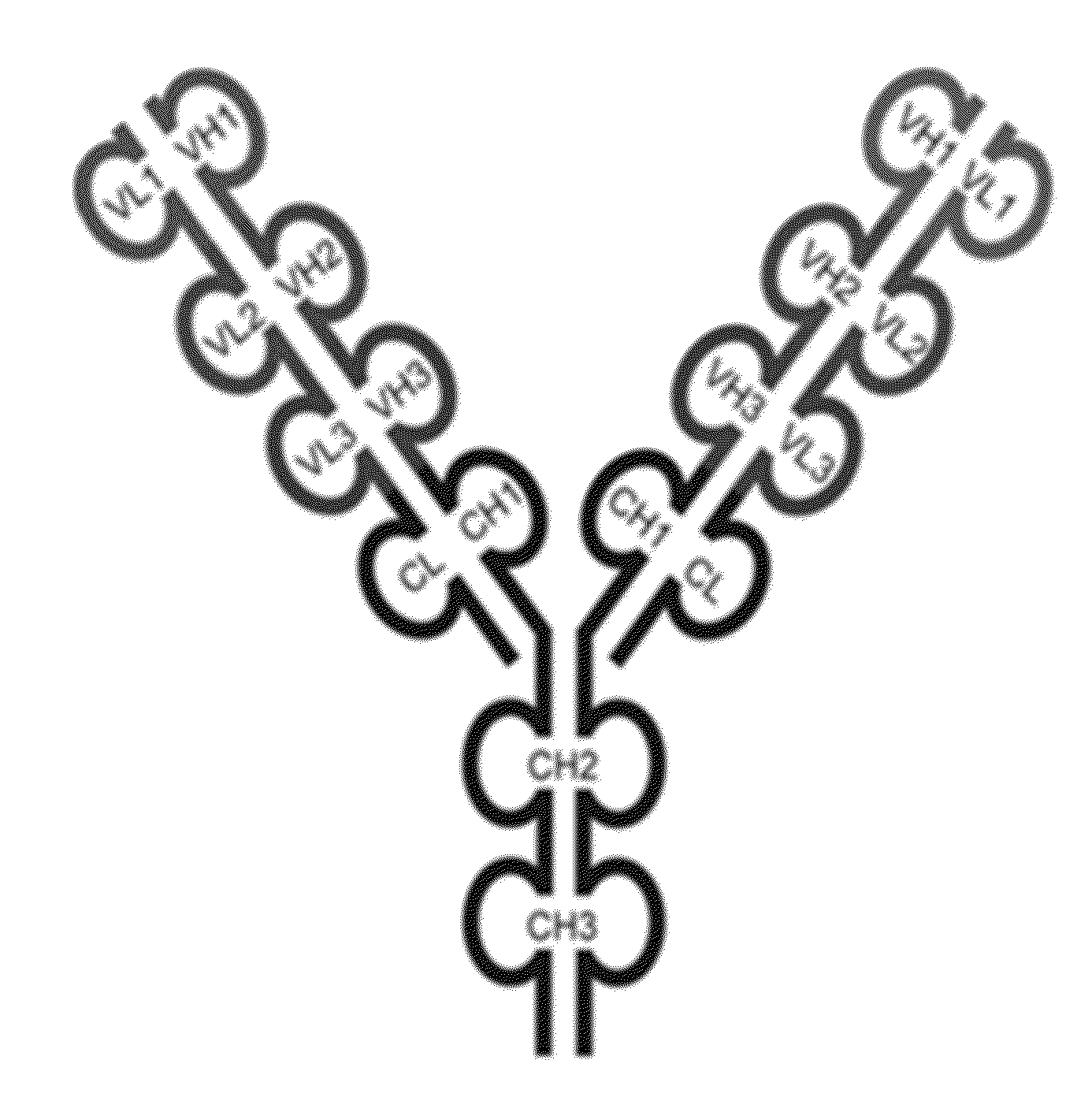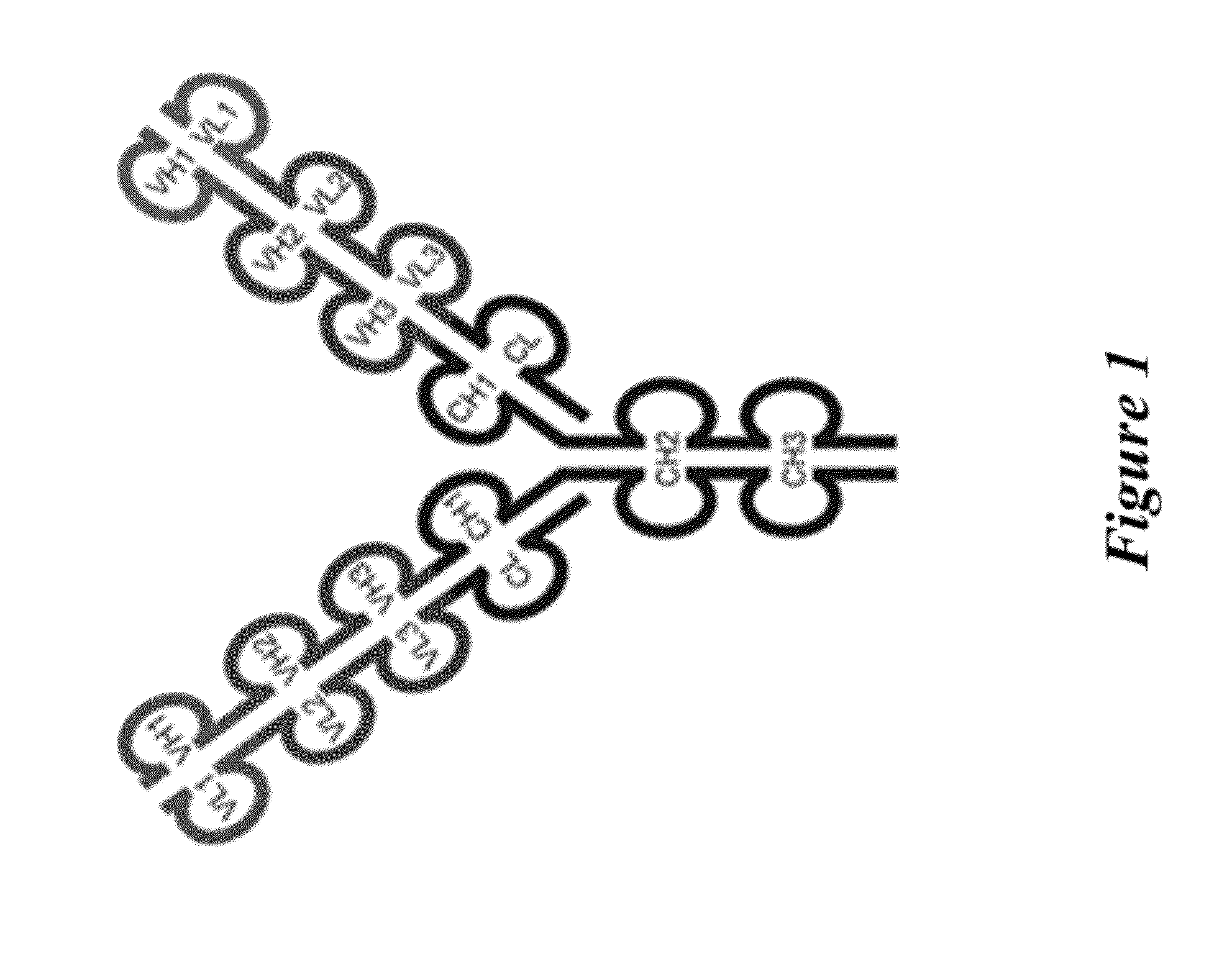Tri-variable domain binding proteins and uses thereof
a technology of domain binding protein and domain domain, which is applied in the introduction of vector-based foreign materials, antibody medical ingredients, fungi, etc., can solve the problems of reduced production yield, complex purification procedures, and inability to yield homogeneous preparations
- Summary
- Abstract
- Description
- Claims
- Application Information
AI Technical Summary
Benefits of technology
Problems solved by technology
Method used
Image
Examples
example 1
Generation of Multi- (i.e., Tri-) Variable Domain Immunoglobulin (TVD-Ig) Molecules that Recognize PGE2, IL-12, and IL-18
[0467]The triple variable domain immunoglobulin (TVD-Ig) molecule is designed such that three different light chain variable domains (VL) from one or more parent monoclonal binding proteins, e.g., antibodies, are linked in tandem directly or via a short linker by recombinant DNA techniques, followed by the light chain constant domain. Similarly, the heavy chain comprises three different heavy chain variable domains (VH) from one or more parent monoclonal binding proteins, e.g., antibodies, linked in tandem, followed by the constant domain CH1 and Fc region (FIG. 1).
example 1.1
Construction, Expression, and Purification of Multi- (i.e., Tri-) Variable Domain immunoglobulin (TVD-Ig) molecules that recognize PGE2, IL-12, and IL-18
[0468]The TVD-Ig protein was designed as an IgG-like molecule except that each light chain and heavy chain of a TVD-Ig protein has three variable domains in tandem instead of one variable domain in an IgG. These three variable domains are separated by short linkers. The linker sequences, which are derived either from the N-terminal sequence of human CH1 / Cκ, are the following:
(SEQ ID NO: 13)Light chain (κ), Short linker.TVAAP(SEQ ID NO: 21)Heavy chain (γl), Short linker.ASTKGP
[0469]These linker sequences, selected from the N-termini of human Cκ and CH1 are natural extension of the variable domains and exhibit a flexible conformation without significant secondary structures based on the analysis of several Fab crystal structures.
[0470]Parent binding proteins, i.e., monoclonal antibodies, including three high affinity monoclonal antibo...
example 1.2
Characterization of Triple Variable Domain Immunoglobulin (TVD-Ig)
PUM
| Property | Measurement | Unit |
|---|---|---|
| nucleic acid | aaaaa | aaaaa |
| concentration | aaaaa | aaaaa |
Abstract
Description
Claims
Application Information
 Login to View More
Login to View More - R&D
- Intellectual Property
- Life Sciences
- Materials
- Tech Scout
- Unparalleled Data Quality
- Higher Quality Content
- 60% Fewer Hallucinations
Browse by: Latest US Patents, China's latest patents, Technical Efficacy Thesaurus, Application Domain, Technology Topic, Popular Technical Reports.
© 2025 PatSnap. All rights reserved.Legal|Privacy policy|Modern Slavery Act Transparency Statement|Sitemap|About US| Contact US: help@patsnap.com


